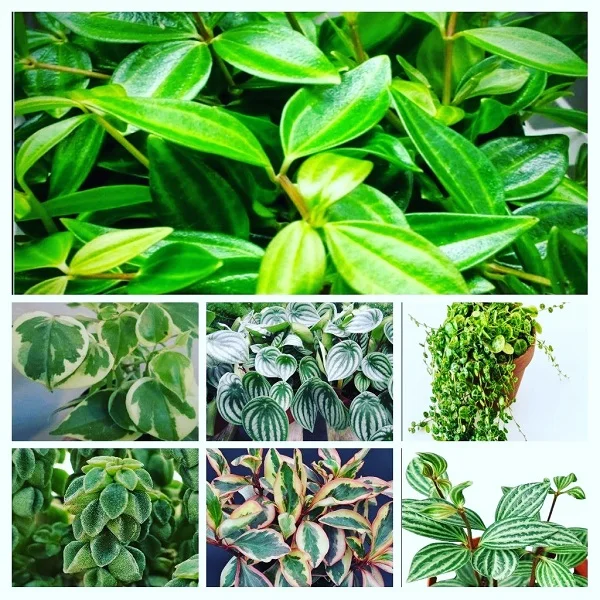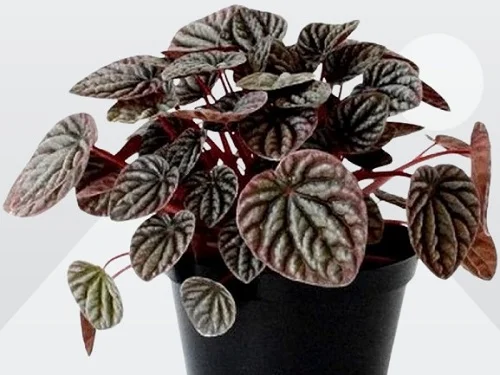7 Trailing Peperomia Types with Pictures and Care Guides
Some links in this post may be affiliate links
Trailing Peperomia varieties bear trailing or creeping stems which cascade downwards beautiful in a hanging basket, on a tabletop, on a desktop, on a pedestal and anywhere the stems can hang downwards.
Peperomia are popular tropical foliage plants with decorative foliage and exhibit varying growth habits. They typically prefer shadier conditions with more humidity. Some might even require a terrarium or a bottle garden to keep the humidity high.
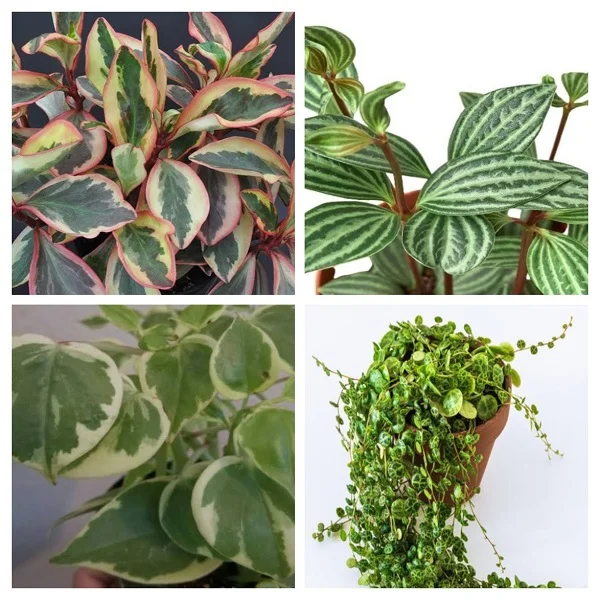
Trailing Peperomia Plants require loose, well-drained soil and like to dry out to some extent or even completely between waterings. One of the major reason for losing a Peperomia is through root-rot caused by over-watering and or soggy soil.
Succulent Peperomia varieties need to be treated like cacti and other succulents, as they can tolerate more light and will survive a dry cold period, during which they are watered very rarely.
We have herebelow outlined for you 7 Trailing Peperomia varieties that are perfect for hanging which you can grow successfully.
7 Trailing Peperomia Plants for Indoors
Popular trailing Peperomia varieties are Peperomia prostrata, Peperomia scandens 'Variegata', Peperomia rotundifolia, Peperomia puteolata, Peperomia angulata among many others.
1. String of Turtles Plant (Peperomia prostrata)
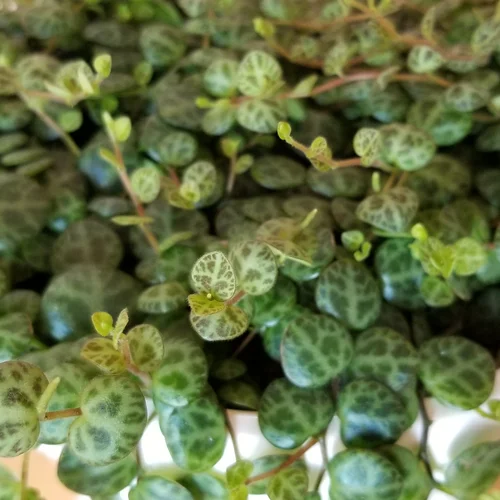
String of Turtles Plant also called Magic Marmer is a compact perennial plant with succulent, heart-shaped leaves, with beautiful patterns of white veins which vary in color from maroon to dark blue to purple in young plants but become silvery-white as the plant matures.
The veining on the leaves gives them the look of tiny turtles and hence give this plant its common name, 'String of Turtles Plant'. It is one the favorite succulent plants for hanging baskets.
Peperomia prostrata flourishes in bright light with 4-6 hours of morning or late afternoon sunshine, warmth of 18-250C, humidity of 50-55% and moderately moist, fertile, well-drained succulents potting mix coupled with monthly feeding during the growing season.
Read more on how to grow and care for String of Turtles Plant
2. Variegated Cupid Peperomia (Peperomia scandens 'Variegata')
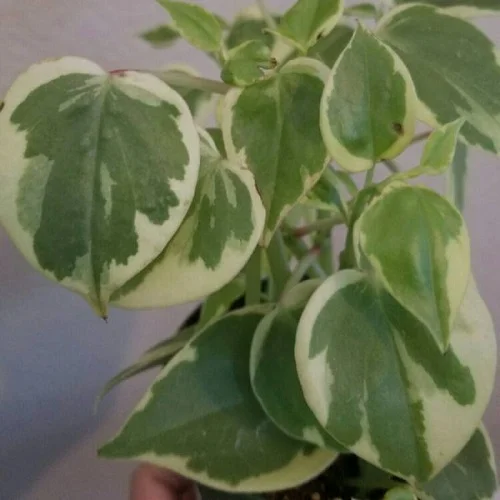
Variegated Cupid Peperomia also called False Philodendron is a magnificent plant which bears heart-shaped, green leaves with cream-colored, golden, yellow, or off-white markings
The stems in False Philodendron are pink, semi-succulent and can spread to a width of 5 feet which make it among the best plants for a hanging basket.
Variegated Cupid Peperomia prospers in medium to bright indirect light (filtered light), warmth of 15-260C, humidity of 55-65% and moderately moist, fertile, all purpose potting soil coupled with monthly feeding during the growing season.
Learn more on how to grow and care for Peperomia scandens 'Variegata'
3. Trailing Jade Peperomia (Peperomia rotundifolia)
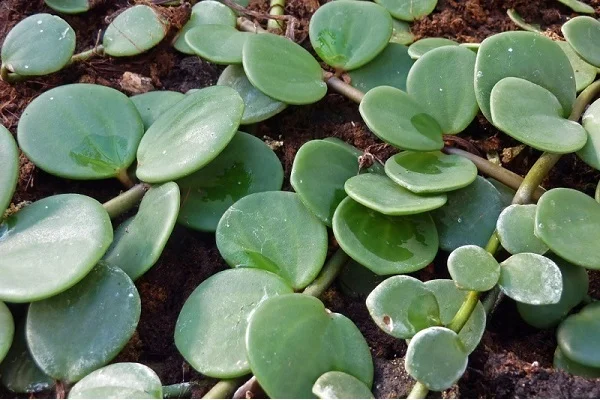
Trailing Jade Plant also called Jade Necklace, Creeping Peperomia, Creeping Buttons and Round Leaf Peperomia bears very small, thick and fleshy, succulent, button-like leaves that may entwine and weave in and out of each other.
The stem consists of hanging shoots and several small green leaves growing all along the stem on either side. Creeping Peperomia is one of the popular succulent plants for growing in the home and office spaces.
Peperomia rotundifolia blossoms in medium to bright indirect light, warmth of 15-260C, humidity of 55-65% and moderately moist, rich succulents potting soil coupled with monthly feeding during the growing season.
Read more on how to grow and care for Trailing Jade Plant
4. Parallel Peperomia (Peperomia puteolata)
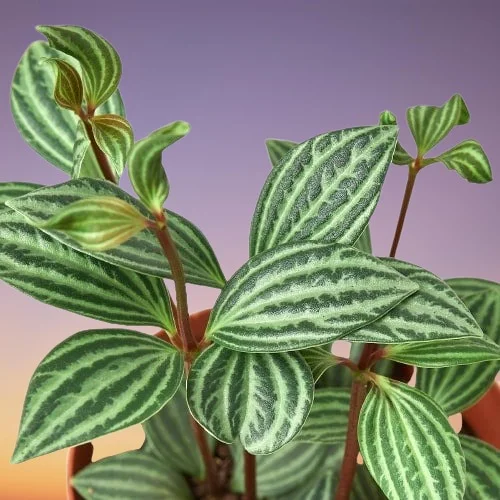
Parallel Peperomia Plant produces cascading stems with a spread of about 16 inches and oval-shaped leaves, patterned in dark green and white.
The leaves bear attractive patterns similar to the stripes found on watermelon rinds and the stems are a deep maroon or reddish color which make Parallel Peperomia a great addition to any plant collection. It is one of the best plants for an office in a hanging basket or desktop.
Peperomia puteolata thrives in medium to bright indirect light, warmth of 15-260C, humidity of 55-65% and moderately moist, fertile, well-drained potting soil coupled with monthly feeding in the growing season.
5. Beetle Peperomia (Peperomia angulata)
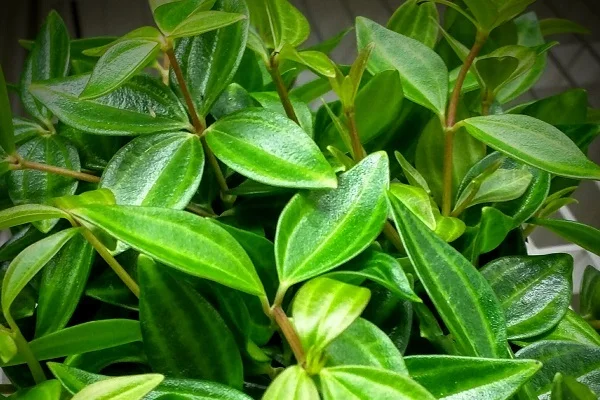
Beetle Peperomia also called Beetle Raditor Plant is a slow-growing tropical herbaceous plant which bears fragile reddish stems and glossy, fleshy, dark-green, oval-shaped leaves with light green lines and look like small Beetles.
On account of its compact size (it grows to a height of about 1 feet) and need for high humidity, Beetle Raditor Plant is one of the best plants for a closed terrarium.
Peperomia angulata performs best in medium to bright indirect light, warmth of 15-260C, humidity of 60-70% and moderately moist, rich, well-drained potting mix coupled with monthly feeding during the growing season.
Read more on how to grow and care for Beetle Peperomia Plant
6. Red Log Plant (Peperomia verticillata)
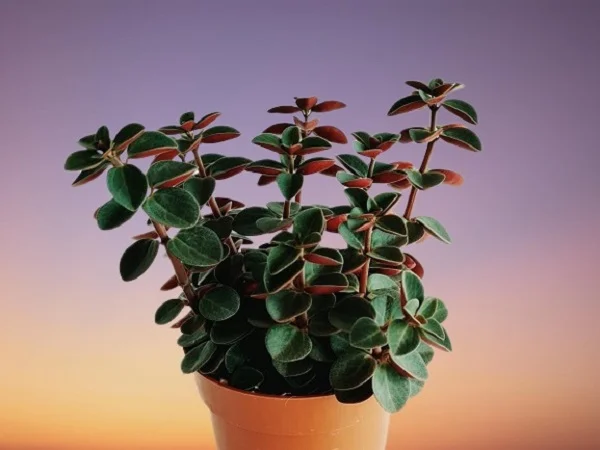
Red Log Plant also called Whorled Peperomia or Belly Button is a compact, evergreen, succulent plant which bears fleshy, cupped, dark-green leaves with red-wine colored undersides and grows to a height of about 12 inches.
The stems in Whorled Peperomia start off upright but eventually spill over due to weight of the leaves and begin to trail. This makes it ideal for hanging baskets and one of the best plants for the limited spaces.
Peperomia verticillata grows best in bright indirect light (dappled light), warmth of 15-260C, humidity of 50-55% and moderately moist, fertile succulents potting soil coupled with monthly feeding in the growing season.
Learn more on how to grow and care for Red Log Plant
7. Peperomia Ginny (Peperomia clusiifolia)
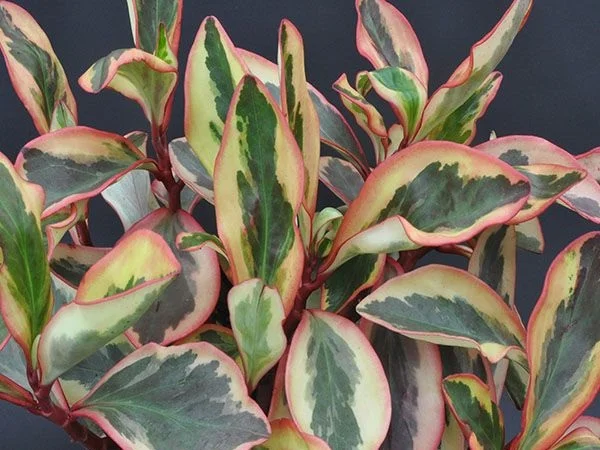
Peperomia Ginny also called Peperomia Jelly, Peperomia Red-edge or Peperomia Tricolor is a herbaceous plant which bears fleshy, oval-shaped leaves that are pointed at the tips.
The leaves are often light green with darker green coloring in the center and red or pink edges. The leaves feel like jelly to the touch and hence the common name, 'Peperomia Jelly'. On account of its striking foliage, Peperomia Red-edge is one of the best plants for the living room where it can create a great first impression.
Peperomia clusiifolia flourishes in medium to bright indirect light (filtered light), warmth of 15-260C, humidity of 60-70% and moderately moist, rich, well-drained potting mix coupled with monthly feeding in the growing season.
Read more on how to grow and care for Peperomia Ginny
